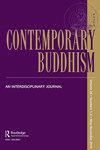Buddhism and Medicine in Japan
IF 0.1
3区 哲学
0 PHILOSOPHY
引用次数: 0
Abstract
Japan’s long engagement with Buddhist ideas about rebirth, the human body, and healing has resulted in diverse forms of thought and practice about these issues that have persisted throughout the ebbs and flows of Japanese history. After Buddhism was introduced to Japan from Korea in the 6th century, a wealth of Buddhist scriptures, treatises, and commentaries, translated from Sanskrit and other Central Asian languages into Chinese, began to arrive from the continent. These scholarly texts often addressed existential issues of how to achieve enlightenment and rebirth in divine buddha-lands, and what constituted karmic obstacles to doing so. Buddhist scriptures also contained prescriptions for healing with sutra or spell recitation, talismans, and drug formulas; they recommended elaborate rites to avert disasters, epidemics, or personal physical, spiritual, and mental afflictions. Added to the indigenous Chinese and Korean medical ideas that were also transmitted to Japan throughout all historical periods, Buddhist sources dealing with illness and health, including special deities and rituals, were selectively adopted for use by Japanese Buddhist scholars, monastics, and lay practitioners based at large metropolitan and small remote temples as well as private homes and facilities. Buddhist temples in particular served as hubs accumulating special kinds of knowledge about the human body, healing, medicine, and materia medica, in addition to the ritually oriented healing. A diverse array of Buddhist practitioners specialized in collecting medicinal plants and producing drugs, copying and further adopting Indian and East Asian drug formulas and prescriptions. Some individually practiced various methods of massage, moxibustion, acupuncture, surgery, midwifery, and veterinary medicine. Virtually all practitioners of Buddhism and healing in Japan had to deal with the issue of pollution (kegare穢れ), resulting from death, childbirth, and contagious diseases. This issue and the concept of pollution, as well as various methods of its purification, played a vital role in the historical formation of healing practices, medicinal and ritual curing, and avoidance of disease in Japan. Various Buddhist denominations championed intellectual, ritual, and medical traditions of their choice. This resulted in at times subtly competing, but more often peacefully coexisting, paradigms of healing that prioritized different forms of well-being: “this-worldly” physical and mental health and stability, or karmically substantiated, “other-worldly” spiritual salvation, as well as a multitude of shades in between. This conglomerate of transculturally mediated Buddhist and East Asian ideas and practices regarding health and healing remained subject to constant adoption and change throughout Japanese history. Perhaps this is what the ambiguous Japanese term “Buddhist medicine” (bukkyō igaku仏教医学) attempts to cover. This term appears to have been coined by the Japanese scholar of Buddhism Obinata Daijō in the 1960s and further promoted by Fukunaga Katsumi 福永勝美 in the early 1970s and 1980s. Their early publications in Japanese formed intellectual premises for a new field of academic studies that has also been gaining scholarly attention in the West. This article surveys the primary and secondary sources focusing on Buddhism, medicine, and healing, mainly from the viewpoint of Japanese history and anthropology, as well as Buddhist and religious studies and art history.日本的佛教和医学
日本长期以来一直信奉佛教关于重生、人体和治疗的思想,这导致了对这些问题的各种形式的思想和实践,这些思想和实践贯穿了日本历史的兴衰起伏。公元6世纪,佛教从朝鲜传入日本后,大量由梵文和其他中亚语言翻译成中文的佛经、论著和注释开始从亚洲大陆传入日本。这些学术文献经常讨论如何在神圣的佛地获得启蒙和重生的存在问题,以及什么构成了这样做的业力障碍。佛教典籍中也包含了通过念经或咒语、护身符和药物配方来治疗的处方;他们推荐精心制作的仪式来避免灾难、流行病或个人身体、精神和精神上的痛苦。除了在所有历史时期都传入日本的中国和韩国本土医学思想之外,日本佛教学者、僧侣、大城市和偏远小寺庙以及私人住宅和设施的非专业从业者都有选择性地采用了涉及疾病和健康的佛教资料,包括特殊的神和仪式。尤其是佛教寺庙,除了以仪式为导向的治疗之外,还充当了积累有关人体、治疗、医学和本草等特殊知识的中心。各种各样的佛教从业者专门收集药用植物和生产药物,复制并进一步采用印度和东亚的药物配方和处方。一些人单独练习各种按摩、艾灸、针灸、手术、助产和兽药。在日本,几乎所有的佛教从业者和治疗者都必须处理由死亡、分娩和传染病引起的污染问题。这个问题和污染的概念,以及净化污染的各种方法,在日本的治疗实践、医学和仪式治疗以及避免疾病的历史形成中发挥了至关重要的作用。各种佛教教派拥护他们所选择的知识、仪式和医疗传统。这导致了有时微妙的竞争,但更多的是和平共处,优先考虑不同形式的福祉的治疗范式:“这个世界”的身心健康和稳定,或业力证实,“另一个世界”的精神救赎,以及介于两者之间的众多阴影。在整个日本历史上,这种跨文化调解的佛教和东亚关于健康和治疗的思想和实践的大杂烩一直受到不断的采纳和改变。也许这就是日本含糊不清的术语“佛教医学”(bukkyki igaku)试图涵盖的内容。这个词似乎是在20世纪60年代由日本佛教学者Obinata daijishi创造的,并在20世纪70年代初和80年代由福永胜美进一步推广。他们早期的日文出版物为一个新的学术研究领域奠定了知识基础,这个领域也受到了西方学术界的关注。本文主要从日本历史和人类学的角度,以及佛教和宗教研究和艺术史的角度,对佛教、医学和治疗的第一手和二手资料进行了调查。
本文章由计算机程序翻译,如有差异,请以英文原文为准。
求助全文
约1分钟内获得全文
求助全文

 求助内容:
求助内容: 应助结果提醒方式:
应助结果提醒方式:


